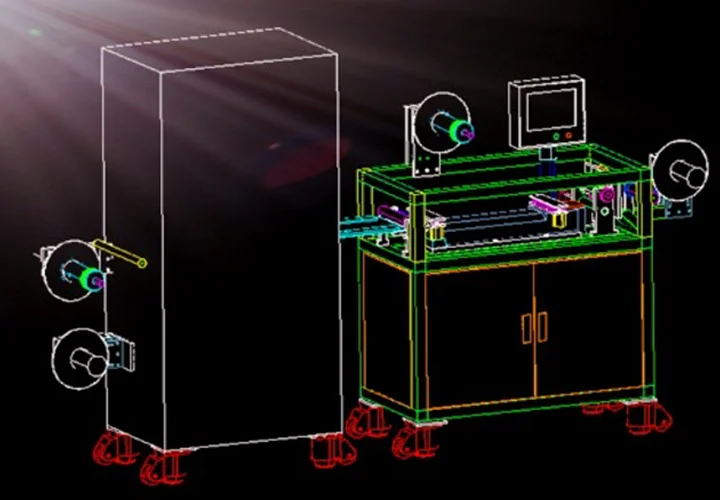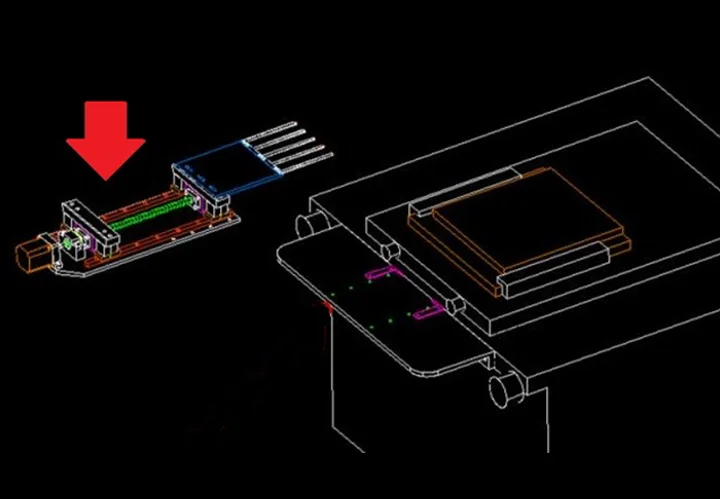MACHINE AND AUTOMATION
/ Automation Units

/ Integrated Automation System and Application
Example
Automatic film laminating system integrated with punching machine (Option: Inspection camera)

 JOB
JOB
- Pull film or adhesive film in fine and precise pitch step
- Release liner from adhesive tape
- Laminate different film material simultaneously
- Control speed and synchronize movement by digital control panel
- Inspect outcome with precise inspection camera real-time
- Finish work in roll or sheet
- Safe and user friendly with selectable languages
/ Material laminating system with automatic sliding plate
 JOB
JOB
- Laminate film in sheet form
- Compatible with various kinds of cushion surface
- Pressure, Temperature, time adjustable
- Control panel and monitor screen with selectable language
- Safe sensor and user friendly

/ Automatic metal plate inserting moving platform

 JOB
JOB
- Hold and insert material firmly
- Insert material instead of hands
- Adjustable length
- Inserting pitch, time adjustable
- Control panel and monitor screen with selected languages
- Safe sensor and user friendly
/ Two-steps laminator
 WHAT CAN DO
WHAT CAN DO
- Laminate materials in roll or sheet form
- Separated laminating unit, separate parameters adjusting in two steps.
- Adjust laminating time, force, and temperature by digital control panel
- Monitor laminating parameter real-time
- Finished work pieces receiving unit
- Safe and user friendly with selectable languages

/ Roll to roll

 JOB
JOB
- Universal platform for film or adhesive film processing
- Precise continue movement
- Control speed and synchronize movement by digital control panel
- Safe and user friendly with selectable languages
/ Inspecting cameras integrated inspection system



 Capture Images: Cameras are strategically placed along the production line to capture images of the products or components as they move through the manufacturing process. Multiple cameras may be used to capture different angles or perspectives of the objects being inspected.
Capture Images: Cameras are strategically placed along the production line to capture images of the products or components as they move through the manufacturing process. Multiple cameras may be used to capture different angles or perspectives of the objects being inspected.
 Image Processing: The captured images are processed using specialized software that analyzes the images to identify defects, anomalies, or deviations from the desired specifications. This software can perform various tasks such as image enhancement, pattern recognition, feature extraction, and comparison with reference images or templates.
Image Processing: The captured images are processed using specialized software that analyzes the images to identify defects, anomalies, or deviations from the desired specifications. This software can perform various tasks such as image enhancement, pattern recognition, feature extraction, and comparison with reference images or templates.
 Defect Detection: The image processing software identifies defects or quality issues based on predefined criteria, such as size, shape, color, texture, or other visual characteristics. It can detect defects such as scratches, cracks, dents, missing components, improper assembly, or deviations from specified dimensions.
Defect Detection: The image processing software identifies defects or quality issues based on predefined criteria, such as size, shape, color, texture, or other visual characteristics. It can detect defects such as scratches, cracks, dents, missing components, improper assembly, or deviations from specified dimensions.
 Decision Making: Once defects are detected, the inspection system makes decisions on whether the inspected item meets quality standards and can proceed to the next stage of production or if it needs to be rejected or flagged for further inspection or corrective action.
Decision Making: Once defects are detected, the inspection system makes decisions on whether the inspected item meets quality standards and can proceed to the next stage of production or if it needs to be rejected or flagged for further inspection or corrective action.
 Feedback and Control: Inspection by camera systems can provide real-time feedback to the manufacturing process, allowing for adjustments or corrections to be made immediately to maintain product quality and consistency. This feedback loop can help optimize production processes and minimize defects or waste.
Feedback and Control: Inspection by camera systems can provide real-time feedback to the manufacturing process, allowing for adjustments or corrections to be made immediately to maintain product quality and consistency. This feedback loop can help optimize production processes and minimize defects or waste.
/ Laser



Lasers are used in industry in a huge variety of applications. These applications can be divided between those that involve the processing of materials and all other applications. Materials processing includes cutting, drilling, welding, etc., and generally involves the use of high-powered lasers. Other applications can be divided into two classes: those that simply use the laser beam as a straight line tool and those involving inspection and scanning.
- Home Home
- Company Information Company Information
- Products & Services Products & Services
- Articles & News Articles & News
- Contact Us Contact Us